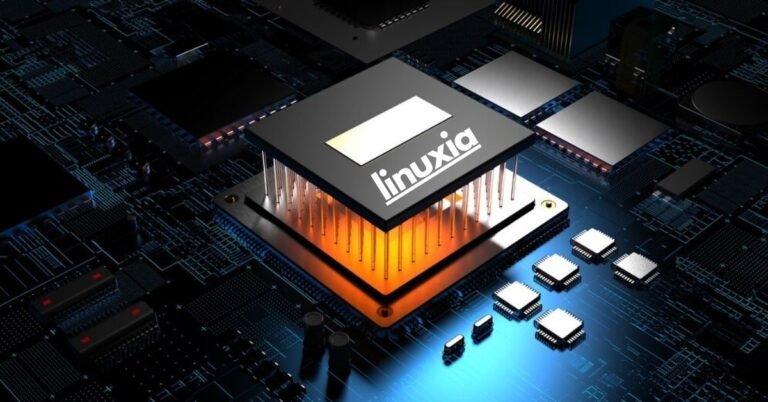What is Linuxia? Well, if you’re venturing into the world of Linux, you’ve probably come across this name quite a few times. Linuxia is a versatile, powerful, and free operating system that has become a favorite among developers, tech enthusiasts, and even casual users. It’s a distribution of Linux that’s designed to offer a seamless and user-friendly experience.
The History of Linuxia
The roots of Linuxia trace back to the early 1990s when Linus Torvalds introduced Linux. Over the years, various distributions have emerged, with Linuxia standing out for its balance of performance and ease of use.
Why Choose Linuxia?
Advantages of Using Linuxia
Why opt for Linuxia over other operating systems? For starters, it’s open-source, meaning it’s free to use and constantly updated by a global community. It’s also highly customizable, secure, and efficient, making it suitable for both personal and professional use.
Comparison with Other Operating Systems
Compared to Windows and macOS, Linuxia offers greater control over your system. It’s less prone to viruses and malware, thanks to its robust security features. Plus, its performance is often superior, especially on older hardware.
Getting Started with Linuxia
System Requirements
Before diving into Linuxia, ensure your system meets the minimum requirements. You’ll need at least 2GB of RAM, a dual-core processor, and 20GB of free disk space.
Installation Process
Installing Linuxia is straightforward. Download the ISO file from the official website, create a bootable USB, and follow the on-screen instructions. The installation wizard will guide you through partitioning your disk and setting up user accounts.
The Linuxia Desktop Environment
Overview of the Desktop Interface
Linuxia’s desktop environment is sleek and intuitive. It features a taskbar, start menu, and system tray, making it familiar to users coming from Windows.
Customization Options
One of Linuxia’s strengths is its customization. You can change themes, icons, and even the entire desktop environment to suit your preferences. Tools like GNOME Tweak Tool make this process even easier.
Linuxia Command Line Basics
Introduction to the Terminal
The terminal is a powerful tool in Linuxia. While the graphical interface is user-friendly, the terminal allows for more precise control over your system.
Common Commands for Beginners
Commands like ls (list files), cd (change directory), and apt-get (package management) are essential for navigating and managing your Linuxia system.
Software Management in Linuxia
Package Managers
Linuxia uses package managers like APT to handle software installation and updates. This ensures that all software dependencies are met and maintained.
Installing and Removing Software
Installing software is as simple as typing sudo apt-get install [software-name]. Removing software follows a similar process with sudo apt-get remove [software-name].
Using Linuxia for Development
Setting Up a Development Environment
Linuxia is a developer’s paradise. You can easily set up environments for various programming languages like Python, JavaScript, and Ruby. Tools like VS Code, Git, and Docker are readily available.
Popular Development Tools
Besides the terminal and text editors, Linuxia supports a plethora of IDEs, compilers, and debuggers, making it ideal for coding and software development.
Networking in Linuxia
Network Configuration
Configuring networks in Linuxia can be done through the network manager or via the command line for more advanced setups.
Troubleshooting Common Network Issues
Tools like ping, ifconfig, and netstat are invaluable for diagnosing and resolving network problems.
Security Features of Linuxia
Built-In Security Tools
Linuxia comes with built-in security tools like firewall settings and SELinux, enhancing your system’s security out-of-the-box.
Best Practices for Securing Your System
Regular updates, using strong passwords, and limiting user permissions are key practices to keep your Linuxia system secure.
Linuxia for Everyday Use
Office Applications
Linuxia supports a range of office applications like LibreOffice, which is fully compatible with Microsoft Office formats.
Multimedia Tools
From VLC Media Player to GIMP for image editing, Linuxia has all the multimedia tools you need for daily use.
Gaming on Linuxia
Compatibility with Games
Gaming on Linuxia has improved significantly. Platforms like Steam and Lutris allow you to play a vast array of games, including many AAA titles.
Best Gaming Platforms
Steam is the go-to platform for Linux gamers, offering a wide selection of Linux-compatible games and tools like Proton for running Windows games.
Linuxia Community and Support
Online Forums and Communities
The Linuxia community is vibrant and supportive. Websites like Reddit, Stack Overflow, and dedicated Linux forums are great places to seek advice and share knowledge.
Getting Help and Support
If you run into issues, you can rely on community support, official documentation, and even paid support options for more complex problems.
Advanced Linuxia Usage
Scripting and Automation
Scripting with Bash and automation tools like Cron jobs can significantly enhance your productivity and streamline tasks.
System Monitoring and Performance Tuning
Tools like htop, iotop, and system logs help you monitor system performance and identify bottlenecks.
Linuxia on Servers
Setting Up a Linuxia Server
Setting up a server with Linuxia involves installing server-specific packages and configuring network settings. It’s ideal for web hosting, file storage, and more.
Common Server Applications
Popular server applications include Apache, Nginx, MySQL, and Docker, providing robust solutions for various server needs.
Conclusion
Linuxia is a powerful, flexible, and secure operating system suitable for a wide range of users. Whether you’re a developer, a gamer, or just looking for a reliable everyday OS, Linuxia has something to offer. Its open-source nature and strong community support make it a compelling choice for anyone looking to break free from proprietary systems.
